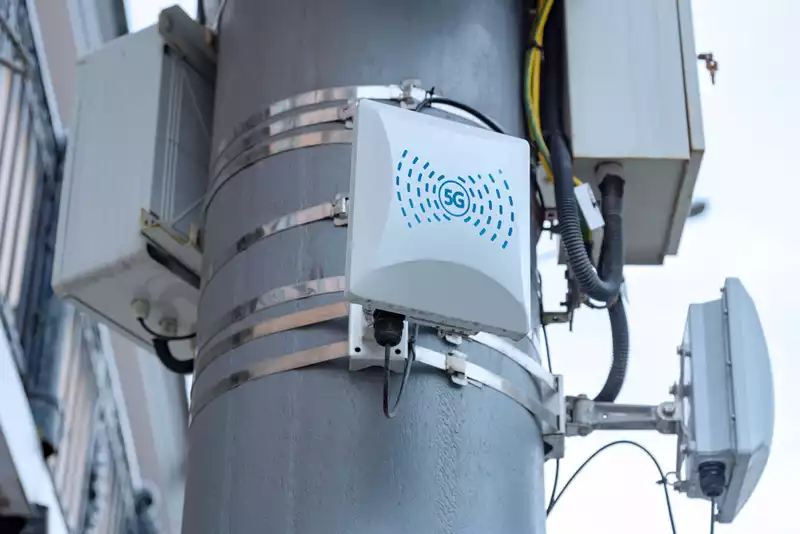When it comes to 5G, it's safe to say we are promised the moon, the sun, and the stars.
This is not to say that the technology is not exciting or revolutionary. Compared to the previous generation of wireless technology, 5G is faster, more reliable, and can handle more simultaneous data streams. In plain English, that means faster downloads, lower latency, better data plans, more powerful apps, and a host of cool new technologies for the average consumer.
Given the attractive potential applications of 5G technology, it is easy to forget that it is still in the very early stages of its life cycle. It will probably be many years before the advances described above become commonplace.
Unfortunately, COVID-19 has created a major setback. Research and deployment in many areas have been slow or have come to a complete halt. And it is not as if things were moving particularly fast to begin with.
There is nothing wrong with fantasizing about the future of 5G. But we need to recognize that it is a future that cannot be realized without overcoming the first hurdles of this technology. The most pressing issue at this point is, in a word, money.
Simply put, 5G smartphones are currently too expensive. And while there have been some developments in this area, such as the release of Qualcomm's new chipset, prices still seem to keep going up. Why is that?
There are several reasons.
Sluggish flagships
Most smartphone makers send out new devices more or less every year. Each new flagship model is loaded with cutting-edge features and hardware. And as a result, prices are rising, even though the performance gap between older and newer models is getting smaller and smaller.
This is happening with or without the development of 5G, and 5G has only amplified this problem.
A familiar story
The 5G pricing problem is hardly unique; when 4G was released, people made similar complaints about how much the cost of smartphones had jumped. This is not just a 4G problem. [New technologies always tend to be expensive at first. [There was a time when fingerprint scanners were not common. There was a time when smart homes were only for the very wealthy. A time when cell phones were used almost exclusively by lawyers and highly paid professionals.
New technologies mean new technical, hardware, and design challenges. Manufacturers must incorporate large numbers of new components into their devices while maintaining aesthetics and ease of use. This extensive R&D effort tends to come at a high price.
Deployment difficulties
5G requires an entirely new infrastructure to reach its full potential. We are talking about thousands of kilometers of coverage and countless new towers; as CNet pointed out, 5G connectivity is a multi-billion dollar endeavor, and part of that cost will naturally be passed on from carriers to consumers. [Just as the coronavirus pandemic has caused a stir in development and deployment, it is also having a major impact on the supply chain. Blockade operations have made it increasingly difficult for companies to obtain needed products and materials. For example, in a survey published by Statista, approximately 69% of respondents said that COVID-19 had negatively affected their logistics, and 73% said that it had negatively affected their supply.
However, the supply chain woes of smartphone manufacturers cannot be attributed solely to the pandemic. The mobile industry has faced shortages of critical raw materials for years. This has also had a noticeable impact on pricing.
Costly network deployment. Material shortages. Technical hurdles and unsustainable release cycles.
The challenges facing 5G are manifold. It is inevitable that they will have some impact on pricing. But will 5G smartphones really cost more than $1,000?
If it is a flagship model. Maybe so. But in that case, remember that you may be paying as much for the brand name as you are for the materials.
If you are willing to pay a premium to get the latest Galaxy, Pixel, or iPhone, and you feel it's worth it, that's fine. But know that you don't have to pay a fortune for 5G. You can get the future of smartphones for much, much less.
This is where TCL comes in. TCL, a world leader in consumer electronics, has spent the last few years leveraging new hardware and manufacturing developments to ensure that its mid-range smartphones can compete with high-end devices, and the 5G version of the TCL 10 Pro is a prime example, retailing for just 400 dollars.
Most notably, this is done while offering specifications comparable to devices sold at much higher price points. This is evidence that the price barrier for 5G connectivity is slowly but surely breaking down. All that remains is for someone to remind flagship manufacturers of this fact.
The connected and autonomous future envisioned by 5G proponents is probably still decades away. But that future begins with the mobile carriers. The infrastructure they are building may soon support far more than smartphones and tablets.
Meanwhile, 5G devices are becoming more affordable by the day. It won't be long before this technology becomes as common as fingerprint sensors and smart appliances. Because while 5G is not without its challenges for both carriers and manufacturers, none of those challenges are insurmountable.
And it is only a matter of time before we see these challenges permanently overcome.
.









Comments